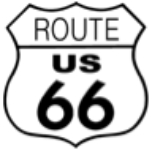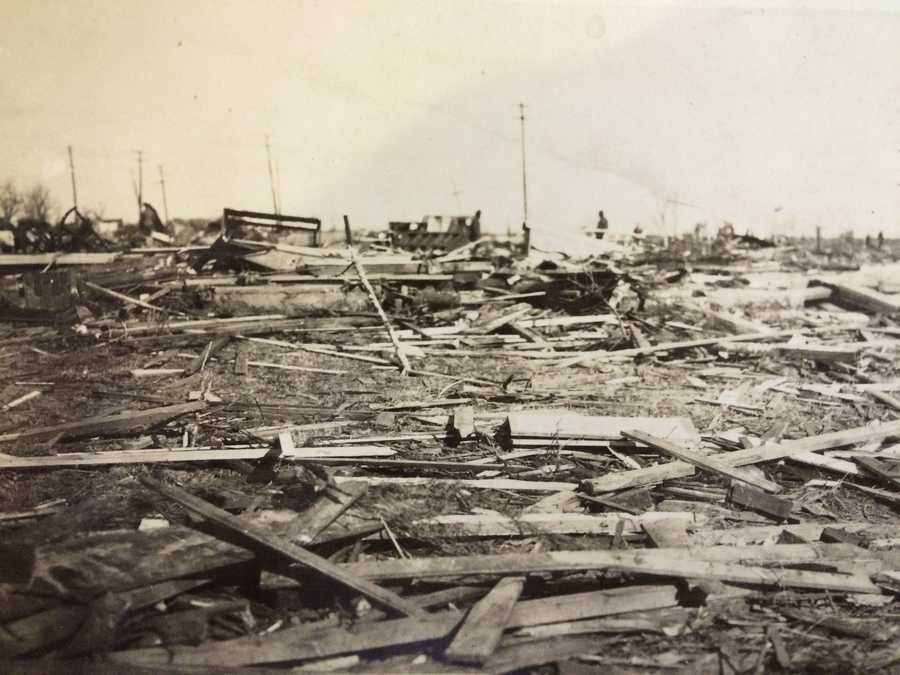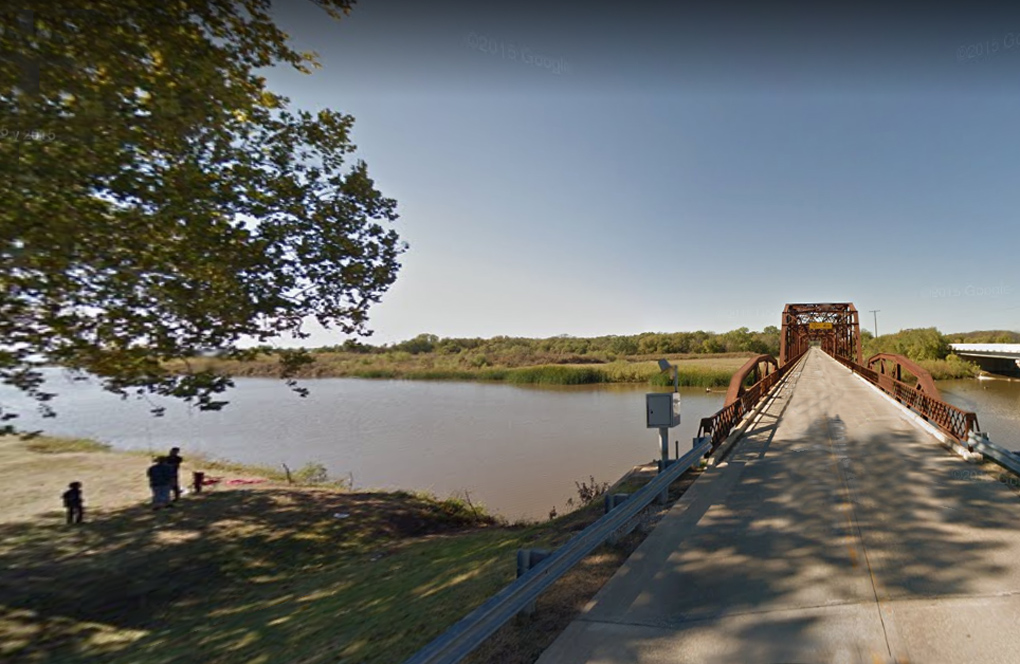
“Did you ever hear Aunt Flora tell about being in the 1930 Tornado here in Bethany?”

In the last blog about the *Atkins Family’s 1948 U.S. Route 66 journey west, the family has traveled through Oklahoma City taking the Route 66 Beltline in order to bypass the downtown area, and have just passed through the small town of Warr Acres.
They continue on into Bethany.
Bethany was established in Oklahoma County in 1909 as a religious settlement by members of the Pentecostal Church of the Nazarene who moved from Beulah Heights on the north side of Oklahoma City. The Oklahoma Holiness College also moved there, later renamed Southern Nazarene University.
They enacted “blue” laws, which outlawed movie theaters, alcoholic beverages, dance halls, pool halls and tobacco, swearing and working on Sunday. In 1948, they were still in effect, but had relaxed somewhat. The population was most likely less than 3,000 since Rittenhouse, the author of a 1946 guidebook, quotes it as 2,590 in that year.
It was named after the biblical Bethany, which was a village in Judea about two miles east of Jerusalem, and where Jesus raised Lazarus from the dead.
As they drive down Route 66 in Bethany, Grace says, “My great aunt that was buried at Memorial Cemetery lived here.”
“Then why wasn’t she buried in Bethany?”
“I’m not sure but I think her parents were buried there at Memorial. They made the 1889 land run, and lived around Oklahoma City somewhere, but she and her husband moved here with some church people, lived in Bethany a long time.”
Luke looks over at her, “I guess that means she was Nazarene.”
“Yes, just like my folks, and all of my sisters, and my brother.”
“I guess you’re the only Free Will Baptist in the bunch.”
“I guess I am.”
“I don’t know how this aunt fits it.”
“Aunt Beth was Mama’s mother’s sister.
“Beth?”
“Elizabeth, but Mama called her Beth; it’s kind of funny, she was here right at the start of this town, and it’s called Bethany, and she was Beth. She lived here from then on. She died in 1929, some kind of accident. Aunt Flora is her daughter.”
“Aunt Flora that lives in Stillwater?”
“Yes. She’s got another story she tells. Did you ever hear Aunt Flora talk about being in the 1930 Tornado here in Bethany?”
“No, I don’t think so.”
“It was bad. November 19th, 1930. There were 23 people killed, and 100 others injured, at least 43 seriously. It hit during the morning and Flora’s two little girls were in school at Camel Creek Schoolhouse. It got so dark it was hard to see but with vivid lightning strikes. Suddenly there was the wind and the roar. Flora said she knew what was coming but it happened so quickly she couldn’t get out to go get her girls. Later the girls said the teacher told them to lie flat on the floor. It was too late to seek any other shelter.
“Some of the kids didn’t even make it down on the floor before the building moved and the roof went spiraling off, and the school was being hurled through the air. The kids were flying everywhere. The girls said that next thing they knew they were lying in the nearby creek and the teacher was beside them. She helped them out and went on to help other children.
“Either four or five of the children were dead and the teacher and eight others were injured. I know another teacher died too but the girl’s teacher seemed to be out of danger, so it might have been at another school.”
(See the actual news clip at the end after credits.)
At the intersection of N. College Avenue and Route 66, on the southeast corner is a two-story brick building built in 1922. It is the Farmers State Bank and became the oldest surviving building in the city.
Grace nods toward it. “That’s one of the buildings that came out with little or no damage. Flora said the tornado destroyed a lot of the town, she thought it was from six to seven hundred buildings.”

Farmers State Bank (gateway.okhistory.org)

1930 Bethany F4 Tornado Damage. gateway.okhistory.org
Grace continues, “After the storm, when the streets were quiet and peaceful again, and the family back together, they went out to look over the damage of the town. Not too long after that, Flora and her family moved to Stillwater.”
At the western edge of Bethany, the Atkins family approaches the rust-colored truss two-lane Lake Overholser Bridge which crosses over the North Canadian River.
Nancy pops up on her knees, sees children playing in the shade of an immense spreading oak tree along the riverbank. She twists around in the seat to look out the back window and watches for as long as she can see them, wishing they could stop so that maybe she could play with the children.

Lake Overholser Bridge (old google map screenshot, crop)
The Overholser Bridge was begun on Highway 3 in 1924 and opened August of 1925. The engineers who designed it not only used the new steel truss technology, but also combined a variety of trusses in unusual ways. With both Parker through trusses and pony trusses, the 748-foot bridge is not only an unusual design, but also a balanced and elegant one.
Soon after the bridge was finished its status changed. Highway 3 became part of the U.S. Route 66 designation. When Route 66 left Bethany and Oklahoma City, it carried travelers over the Lake Overholser Bridge. The bridge Officially lost it connection with Route 66 in 1958.
We leave the family crossing the Overholser Bridge in their 1937 Chevy 4-door sedan. Directly after they exit the bridge, they will leave Oklahoma County and soon reach Yukon Oklahoma.
.
* * * * *
Next: Oklahoma City Area Part 5, Yukon and on west to Sayre
Because of my need to slash the word count of my book Tumbleweed from nearly 130,000 to fewer than 100,000, many cuts are those that added to historical value rather than story. It makes me sad because I like those historical references. I hope that by presenting some of those here, I can share an authentic 1948 trip down Route 66 and add a little extra as I go.
My parents made a real 1948 trip to California and my mother kept a diary, which I faithfully used in planning this fictional trip.
Cuts: My cuts to my book Tumbleweed have been made and it is now about 98,400 words. Yeah!
Credits: Jack D. Rittenhouse, (1946). A Guide Book to Highway 66; Mother’s Journal
Image Credits:
1 1937 Chevy 4-door Sedan: Photoshop on personal picture.
2 R66 Shield pngegg.com
3 Newspaper Article Sigtor Spotlight
4 Farmers State Bank in 1920s gateway.okhistory.org
5 Hurricane Damage gateway.okhistory.org
6 Overholser Bridge Google Maps Screenshot crop
* * * * *
Complete Actual News Story Cutting from Sigtor Spotlight.


Very interesting story!